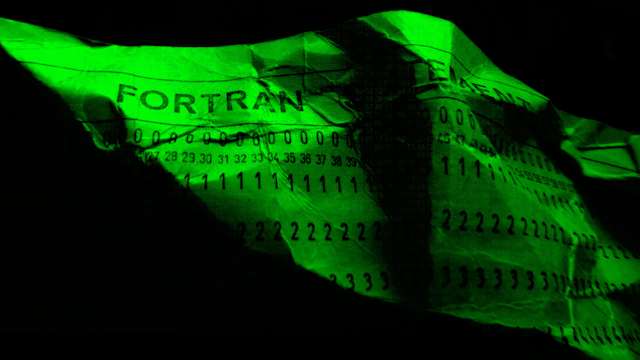You’ve heard of quantum computers – they harness the power of atoms and molecules to perform memory and processing tasks; they exist in labs but are still a long way off in practical terms. But maybe they’re not as far off as we thought.
As published in Nature today, my colleagues and I have established a world-first in this area. We’ve demonstrated a quantum bit (or qubit) based on the nucleus of a single atom in silicon, promising dramatic improvements for data processing in the ultra-powerful quantum computers of the future.
Where are we now?
If you buy a new computer today, most likely its processor contains around a billion silicon transistors, each one so small that its “active area” is just about 50 atoms wide, or 22 nanometres.
That’s way smaller than, say, an HIV virus. And yet, electrical engineers have managed to ensure this microscopic transistor still behaves like a simple switch, which blocks or allows the passage of electrical current.
Since the switch can take two states - ON or OFF - it can encode one bit of binary information, 0 or 1. This is how computers work: they elaborate information written in binary code, by switching silicon transistors ON and OFF.

Now imagine you could build a switch that could be ON and OFF “at the same time”. That means you could have a bit of information that can be 0 and 1 at the same time.
Strange as it may sound, this is how atomic-scale systems work, by obeying the laws of quantum mechanics.
Electrons can be in two places at the same time, atoms can be vibrating weakly or strongly at the same time, and the magnetic orientation (known as the spin) of an electron or a nucleus can point North or South at the same time.
All these physical systems, and many more, constitute what we call quantum bits, or qubits.
Qubits
We expect quantum computers might revolutionise the way certain hard computational problems can be solved, such as data encryption, database search, or simulation and design of molecules, drugs and advanced materials. And the fundamental building blocks of those computers are qubits.
An atom trapped by electromagnetic fields in vacuum is often considered as the current benchmark for qubit performance.
David Wineland from the US National Institute of Standards and Technology shared last year’s Nobel Prize for Physics for his pioneering work in this field, and a recent experiment with trapped ions showed the quantum simulation of a complex quantum magnet which would be intractable by normal computers.
Given modern silicon transistors are coming close to the atomic size, an obvious question occurs: would it be conceivable to encode quantum information using atoms in silicon, instead of in vacuum?

If so, we could leverage the unparallelled technological and industrial infrastructure of silicon microelectronics, which already underpins the entire information era we live in.
The experiment carried out in my research group at the University of New South Wales – in collaboration with Andrew Dzurak at UNSW and David Jamieson at the University of Melbourne – suggests we could indeed encode quantum information using atoms in silicon.
Core issues
Last year we demonstrated a quantum bit using the spin of the electron of a phosphorus atom in silicon.
What determines the size of the atom is the orbit of the electron. The core of the atom is the nucleus, which contains the positive charge and is about a million times smaller than the electron orbit.
The nucleus itself has a spin, but its magnetic dipole is a thousand times weaker than that of the electron. Our breakthrough consists in the demonstration of a fully functional, readable and writable, quantum bit based on the nuclear spin of a single phosphorus atom.
This was an extraordinary challenge, but it came with big rewards.
The nucleus is very well isolated from the outside world, and that means a delicate quantum state – the superposition of 0 and 1 – can remain undisturbed for very long time.
We managed to preserve it for 0.06 seconds, which in the quantum world is an eternity. We were able to read out the state of the nucleus with fidelity better than 99.8% - a result comparable with ions trapped in vacuum.
We even succeeded in observing “quantum jumps” (abrupt changes from one energy level to another) of the nuclear spin, something that even Erwin Schroedinger – one of the founding father of quantum mechanics – was sceptical about.
The electron and the nucleus of an atom represent two independent qubits – and that’s a lot of quantum resources in such a small volume. Since they are naturally coupled to each other, we are currently exploring the option of using the nucleus as a “quantum memory” for the state of the electron, which would otherwise decay more quickly.
There is still a long way to go before a large-scale quantum computer becomes available. But now we know silicon can be used to host coherent and high-fidelity qubits, the future looks rosier than ever.

